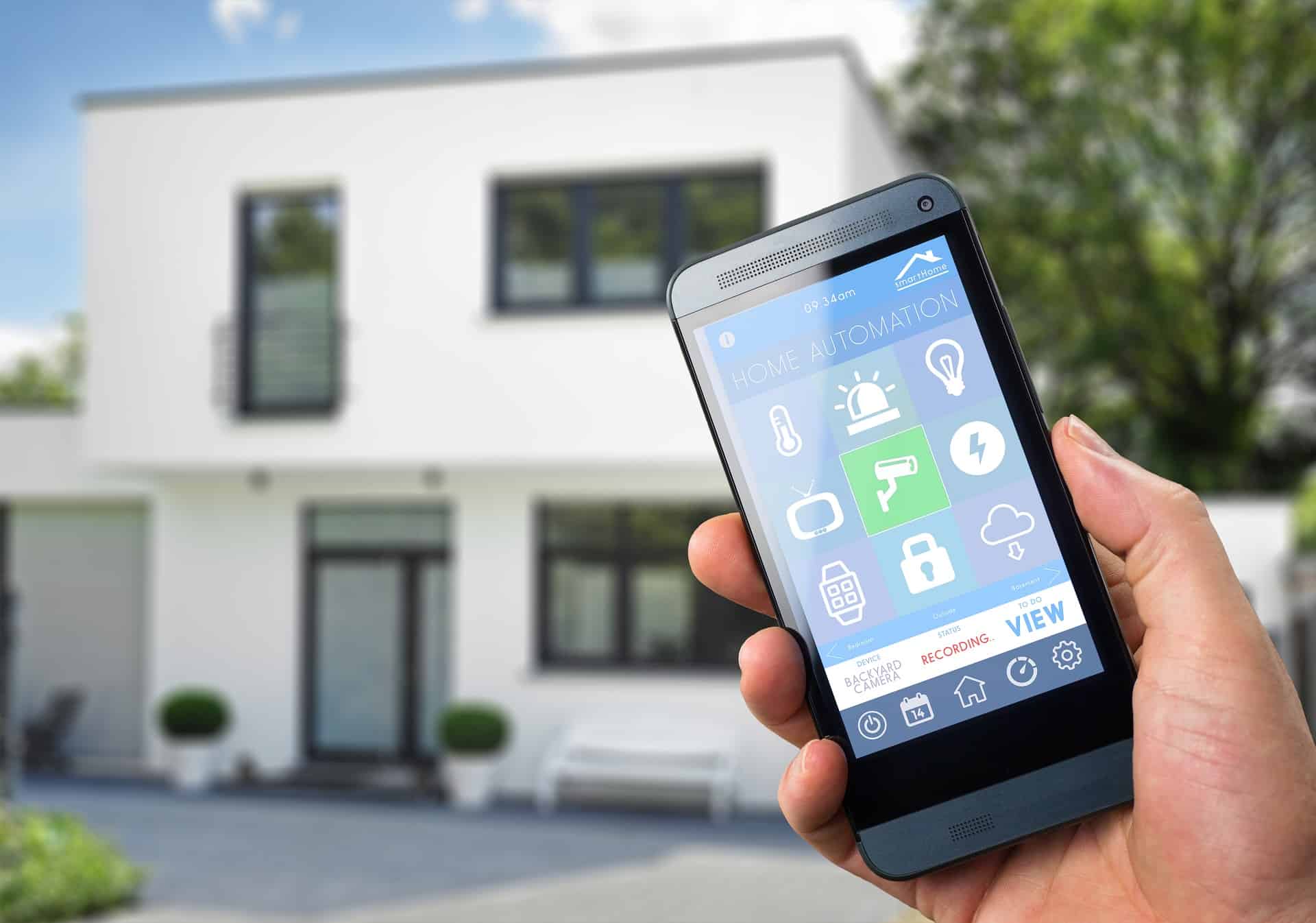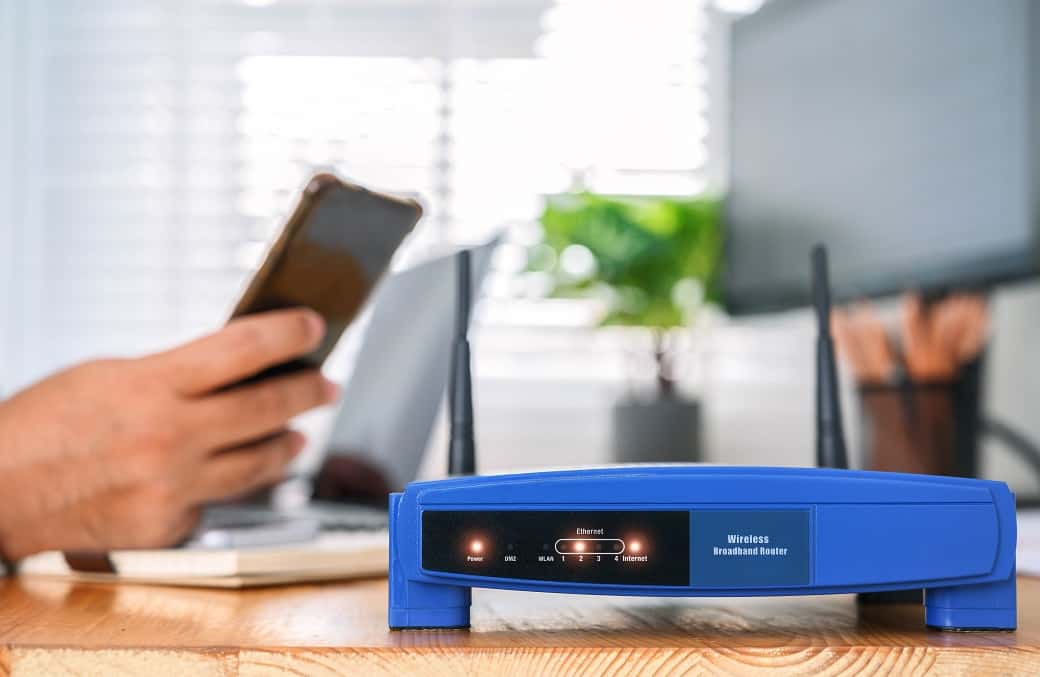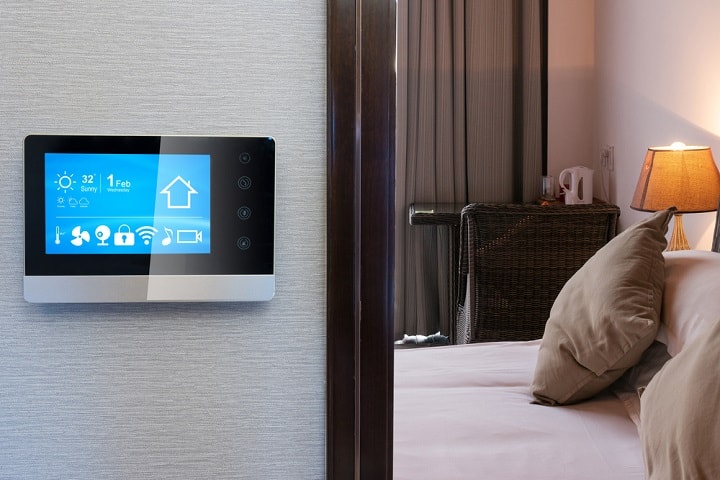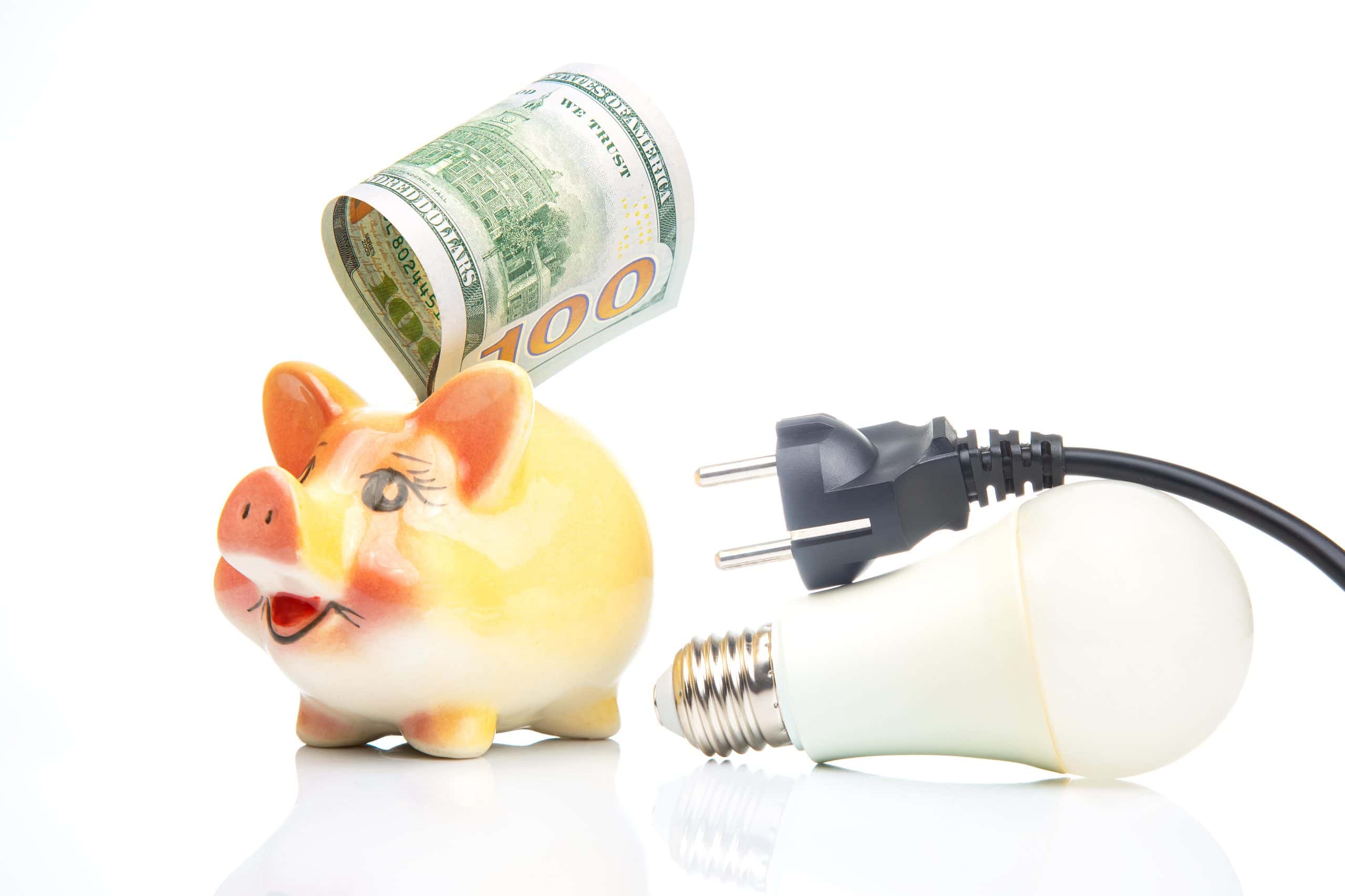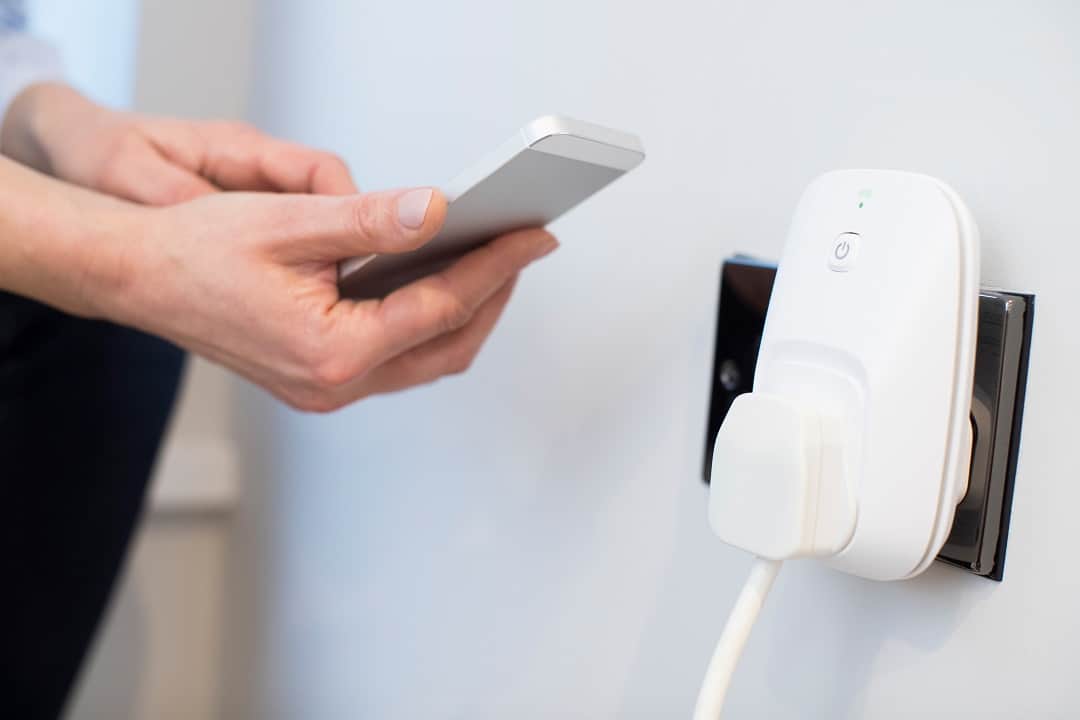If you’ve ever wondered what all the buzz is about when it comes to smart homes, then you’re in the right place. In today’s fast-paced world, technology continues to revolutionize the way we live, and smart homes are at the forefront of this digital transformation. From controlling your lights with a simple voice command to having your coffee ready as soon as you wake up, the possibilities are endless. In this post, we’ll delve into the fascinating world of smart homes, exploring what they are, how they work, and why they are becoming increasingly popular. So, if you’re ready to unlock the potential of a more connected and convenient lifestyle, keep reading to find out more about what a smart home can do for you.
What is a Smart Home?
A smart home refers to a setup where various devices and appliances within a household can be connected and controlled remotely. This connectivity is made possible through the use of internet-enabled devices and the Internet of Things (IoT) technology. With a smart home, you can automate and control various aspects of your living space, such as lighting, temperature, security systems, entertainment systems, and even kitchen appliances. It essentially allows you to have a more convenient, efficient, and comfortable living environment.
One of the key benefits of a smart home is the convenience it offers. Imagine being able to control your thermostat, turn off lights, or lock doors from your smartphone or voice commands. Even better, imagine the lights automatically turning on at dusk, your favorite music playing when you get home, and the doors auto-locking and lights turning off when you go to bed. With a smart home setup, you can easily manage and monitor your home even when you’re away. This can be particularly useful for ensuring energy efficiency and security. Smart home technology also allows for automation, where certain tasks can be performed automatically based on preset conditions or triggers. For example, you can set your lights to turn on when you enter a room or have your coffee maker start brewing as soon as you wake up. These automated features can save you time and make your everyday life more streamlined and hassle-free.
Smart Home Devices
In today’s world, technology continues to advance at a rapid pace, and one of the most exciting developments is the concept of a smart home. Smart home devices are essentially everyday household items that have been enhanced with the power of connectivity and automation. These devices can include smart speakers like Amazon Echo or Google Home, smart thermostats that can be controlled remotely, smart security systems with cameras and sensors, and even smart appliances like refrigerators and washing machines. The possibilities are endless, and the convenience and efficiency that smart home devices offer are truly remarkable.
Communication Protocols
For smart home devices to communicate with each other and with the homeowner, they rely on communication protocols. These protocols act as the language that allows different devices to understand one another and work together seamlessly. The most common communication protocols used in smart homes include Wi-Fi, Bluetooth, Zigbee, and Z-Wave. Wi-Fi is the most widely used protocol, as it provides a fast and reliable connection. Bluetooth is often used for short-range communication between devices in close proximity. Zigbee and Z-Wave are wireless protocols specifically designed for smart home applications, offering low-power consumption and extended range. By using these communication protocols, smart home devices can easily exchange information and be controlled remotely through a smartphone or voice commands.
FAQ
What exactly is a smart home?
A smart home is a residence equipped with devices and appliances that can be controlled remotely or programmed to perform tasks automatically. These devices are connected to the internet and can communicate with each other, allowing you to manage and monitor your home from anywhere using a smartphone or other smart devices. With a smart home, you can control things like lighting, temperature, security systems, entertainment systems, and even household appliances with just a few taps on your smartphone. This technology offers convenience, energy efficiency, and enhanced security, making your daily life more comfortable and efficient. From adjusting the thermostat before you arrive home to receiving security alerts on your phone, a smart home brings a new level of control and connectivity to your living space.
How does a smart home work?
A smart home is a house that utilizes technology to automate and control various household functions. It works by connecting different devices and appliances, such as lights, thermostats, security systems, and entertainment systems, to a central hub or network. This hub acts as the brain of the smart home, allowing users to control and monitor the connected devices remotely through their smartphones or voice assistants. Smart homes can also be programmed to perform certain actions automatically, based on preset schedules or triggered by specific events. For example, you can set your smart lights to turn on at a specific time or have your thermostat adjust the temperature when you leave or arrive home. The key idea behind a smart home is to simplify and enhance everyday living by providing greater convenience, energy efficiency, and security.
What are the benefits of having a smart home?
The benefits of having a smart home are numerous. Firstly, a smart home offers convenience and efficiency. With the ability to control devices and appliances remotely, you can turn on the lights, adjust the thermostat, or even start your coffee maker before you even get out of bed. This saves you time and energy. Secondly, smart homes enhance safety and security. You can monitor your home through cameras and receive alerts for any suspicious activity. Smart locks and alarm systems provide an extra layer of protection. Additionally, smart homes promote energy savings. By automating window coverings, lighting and heating systems, you can reduce energy waste and save money on utility bills. Lastly, smart homes offer accessibility for people with disabilities or limited mobility. With voice control technology, individuals can easily access and control various aspects of their home, making everyday tasks more manageable.
What are the different components of a smart home system?
The different components of a smart home system typically include devices that are connected to the internet and can be controlled remotely. These devices can include smart thermostats, smart lighting, smart security cameras, smart door locks, smart speakers, and even smart appliances. These devices communicate with each other and with a central hub or controller, which allows you to control and automate various aspects of your home. For example, you can use a smartphone app or voice commands to adjust the temperature, turn on/off lights, lock/unlock doors, monitor your home security, and even control your appliances. By integrating these components into a smart home system, you can enjoy greater convenience, energy efficiency, and security.
Can I convert my current home into a smart home?
Yes, you can convert your current home into a smart home! Converting your home into a smart home simply means integrating smart devices and technologies that allow you to control various aspects of your home remotely. There are a wide range of smart devices available on the market, such as smart thermostats, smart lighting systems, smart security cameras, and smart speakers. These devices can be connected to a central hub or controlled individually through smartphone apps. With a smart home setup, you can control your home’s temperature, lighting, security, and even appliances with just a few taps on your smartphone or voice commands. While the process of converting your home into a smart home may require some initial setup and investment, it is definitely possible and can greatly enhance your daily living experience.
Are there any security concerns with smart homes?
Yes, there are potential security concerns with smart homes, just as there are with any internet-connected device. Smart homes rely on various devices and systems that communicate with each other and can be accessed remotely. This connectivity opens up the possibility of hackers gaining unauthorized access to your home’s network and devices. However, there are steps you can take to mitigate these concerns. First, ensure that you have a strong and unique password for your smart home devices and change them regularly. You should also keep the firmware of your devices up to date, as manufacturers often release security patches. Additionally, it’s a good idea to secure your home network by using a strong Wi-Fi password and keeping your router’s software up to date. By following these precautions, you can enjoy the convenience of a smart home while minimizing the security risks.
Will a smart home increase the value of my property?
Yes, a smart home can increase the value of your property. In today’s technology-driven world, homebuyers are increasingly looking for homes that offer smart features and automation. A smart home allows for greater convenience, energy efficiency, and security, which are attractive selling points. Smart devices such as thermostats, lighting systems, security cameras, and voice-controlled assistants can make a home more appealing to potential buyers. Additionally, having a smart home infrastructure in place can provide a strong selling point and give your property a competitive edge in the real estate market. So, investing in smart home technology can not only enhance your daily life but also boost the value of your property.
How do I control a smart home?
To control a smart home, you can use a variety of methods. The most common way is through a smartphone or tablet, using a dedicated app provided by the smart home device manufacturer or your smart home hub. These apps allow you to control and monitor various aspects of your smart home, such as adjusting the temperature, turning lights on and off, or even locking and unlocking doors. Additionally, many smart home systems also offer voice control options, allowing you to use voice commands through virtual assistants like Amazon Alexa or Google Assistant. Some smart home devices even come with physical control options, such as remote controls or wall-mounted control panels. With these various control options, you have the flexibility to manage your smart home in the way that is most convenient for you.
What kind of devices can be connected to a smart home system?
A smart home system allows you to connect a wide range of devices, making your home more convenient and efficient. From smart thermostats and lighting controls to security cameras and door locks, there are countless options to choose from. You can also connect appliances like refrigerators, washing machines, and even coffee makers to your smart home system. This means you can control and monitor these devices remotely using your smartphone or voice commands. The possibilities are endless, and you can customize your smart home system to fit your specific needs and preferences.
Are smart homes only for tech savvy individuals?
No, smart homes are not only for tech-savvy individuals. While having some technological know-how can certainly enhance the smart home experience, smart home devices and systems are designed to be user-friendly and accessible to people of all technological backgrounds. Many smart home devices can be easily set up and controlled through intuitive smartphone apps or voice commands. Additionally, smart home technology has become increasingly mainstream, with more and more products and brands entering the market. This means that there are options available for every level of technical expertise, from basic plug-and-play devices to more advanced systems that can be customized to fit specific needs. Whether you’re a tech enthusiast or simply looking to make your home more convenient and efficient, there’s a smart home solution out there for you.
Are there any privacy concerns with smart homes?
Yes, there can be privacy concerns with smart homes. Since smart homes rely on interconnected devices and sensors, there is a potential for data breaches or unauthorized access to personal information. Also, many devices that are connected to the internet send your data to the manufacturer for some sort of processing. However, it’s important to note that many smart home devices have built-in security measures to protect your privacy. It’s advisable to choose reputable brands and ensure that your devices are regularly updated with the latest security patches. Additionally, you can take precautions such as using strong and unique passwords, enabling two-factor authentication, and reviewing the privacy policies of the products you use. By being proactive and staying informed about the privacy features and risks associated with smart homes, you can enjoy the convenience and benefits they offer while minimizing potential privacy concerns.
How much does it cost to make a home smart?
The cost of making a home smart can vary depending on the level of automation and the specific devices you choose. Generally, the basic smart home setup can range from a few hundred dollars to a few thousand dollars. This typically includes smart speakers, smart thermostats, smart lighting, and a smart hub to control everything. However, the cost can increase if you want to add more advanced features like smart locks, security cameras, or smart appliances. Keep in mind that while there is an upfront cost, a smart home can also save you money in the long run by optimizing energy usage and enhancing security.
Can I integrate different brands of smart home devices?
Yes, you can integrate different brands of smart home devices. One of the key features of a smart home is its ability to connect and communicate with various devices, regardless of the brand. This is made possible through the use of protocols such as Wi-Fi, Zigbee, and Z-Wave, which allow devices from different manufacturers to work together seamlessly. For example, you can have a smart thermostat from one brand, smart lights from another brand, and a smart speaker from yet another brand, and still have them all connected and controlled through a single smart home hub or app. Just make sure that the devices you pick are able to integrate with your chosen smart home hub. This flexibility gives you the freedom to choose the best devices for each specific task while still enjoying the benefits of a fully integrated and connected home.
Are there any energy saving advantages to having a smart home?
Yes, there are several energy-saving advantages to having a smart home. One of the key features of a smart home is the ability to automate and control various devices and systems remotely. This means that you can easily monitor and adjust your energy usage from anywhere, helping you to be more conscious of your consumption. For example, you can use smart thermostats to schedule and regulate the temperature of your home, ensuring that you’re not wasting energy when you’re not there. Additionally, smart lighting systems allow you to customize and automate lighting schedules, so you can avoid leaving lights on unnecessarily. There was even one recent study that found a 13% yearly savings from automating window blinds. Overall, having a smart home can lead to significant energy savings, reducing both your carbon footprint and your utility bills.
Can a smart home system be installed in an apartment?
Yes, a smart home system can definitely be installed in an apartment. In fact, smart home technology is designed to be flexible and adaptable to different living spaces, including apartments. Whether you own or rent your apartment, you can enjoy the benefits of a smart home system. With a smart home system, you can control various aspects of your apartment, such as lighting, temperature, security, and entertainment, all from your smartphone or voice-controlled devices. Additionally, most smart home devices are designed to be easy to install and do not require any major modifications to your apartment. This means you can enjoy the convenience and efficiency of smart home technology without having to worry about any complicated installation processes.
What happens if the power goes out, can I still control my smart home?
If the power goes out, you may not be able to control your smart home. Like any other home, if the power goes out the lights won’t work. Any device that would depend on electricity to function as a “dumb” device would not function as a smart device either.
Devices that are powered by battery backup may still work, especially if they have a manual override. This can include items like door locks, window blind rollers that are battery powered, and security cameras with a battery backup.
Your smart home hub may not work, since again there is no electricity. Also, your WiFi and internet would probably be down, again due to a lack of power. For these devices, connecting them to a UPS backup may allow your smart home controller and WiFi devices to function normally or with restricted features.
Are smart homes compatible with voice assistants like Amazon Alexa or Google Assistant?
Yes, smart homes are indeed compatible with voice assistants like Amazon Alexa or Google Assistant. You would want to verify with each smart home device before purchasing it, but most devices are compatible with these “big name” smart home hubs. These voice assistants act as the central hub for controlling and managing various smart devices in your home. By integrating your smart home devices with a voice assistant, you can use simple voice commands to control your lights, thermostat, security system, and more. For example, you can say, “Alexa, turn off the lights” or “Hey Google, set the thermostat to 72 degrees.” This integration allows for a seamless and convenient user experience, where you can control your smart home devices hands-free, using just your voice.
Can I monitor and control my smart home remotely?
Yes, you can monitor and control your smart home remotely. Smart homes are equipped with advanced technology that allows you to access and manage various aspects of your home from anywhere, using your smartphone or tablet. With the help of smart home devices and a stable internet connection, you can remotely control your lights, thermostat, security system, door locks, and even appliances. This means that you can turn off lights, adjust the temperature, arm or disarm your security system, and lock/unlock doors even when you’re not at home. This level of control and convenience not only adds comfort to your life but also enhances the security and energy efficiency of your home.
Are there any drawbacks or limitations to having a smart home?
Yes, there can be some drawbacks or limitations to having a smart home. While the convenience and automation features of a smart home are undeniably appealing, there are a few things to consider. Firstly, setting up a smart home can be quite an investment, as you will need to purchase compatible devices and potentially hire a professional for installation. Additionally, there may be compatibility issues between different brands or devices, so it’s important to research and ensure that all your devices will work together seamlessly. Another potential limitation is the reliance on technology and connectivity. If there is a power outage or internet downtime, some smart home features may not work until the issue is resolved. Lastly, as with any connected device, there is always a risk of cybersecurity threats, so it’s crucial to take necessary precautions to protect your smart home network. Despite these limitations, many people find the benefits of a smart home outweigh the drawbacks, as it can greatly enhance convenience, energy efficiency, and security in their daily lives.
How easy is it to set up and maintain a smart home system?
Setting up and maintaining a smart home system can be surprisingly easy. The biggest concern is to make sure that your chosen devices are compatible with your chosen smart home hub. Once you make sure of that, setting up and maintaining a smart home should be relatively easy. Many smart devices are designed with user-friendly interfaces and intuitive installation processes, making it accessible even for those with limited technical expertise. Most smart home systems can be set up using a mobile app, which guides users through the step-by-step process. Additionally, many smart devices are designed to work seamlessly with each other, making it easier to expand and customize your system over time. As for maintenance, smart home systems generally require minimal effort. Updates and bug fixes can be easily installed through the app, and troubleshooting guides are readily available online. Overall, while there may be a learning curve initially, the convenience and control that a smart home system offers make it well worth the effort.
In Summary
Thank you for taking the time to read this blog post exploring what a smart home is. I hope you found it informative and engaging. Our homes are becoming more advanced every day with the introduction of smart technology. From controlling our lights and appliances with a simple voice command to monitoring our security systems remotely, the possibilities are endless. As we continue to embrace the convenience and efficiency of smart homes, it’s important to stay informed about the latest advancements and how they can enhance our lives.
